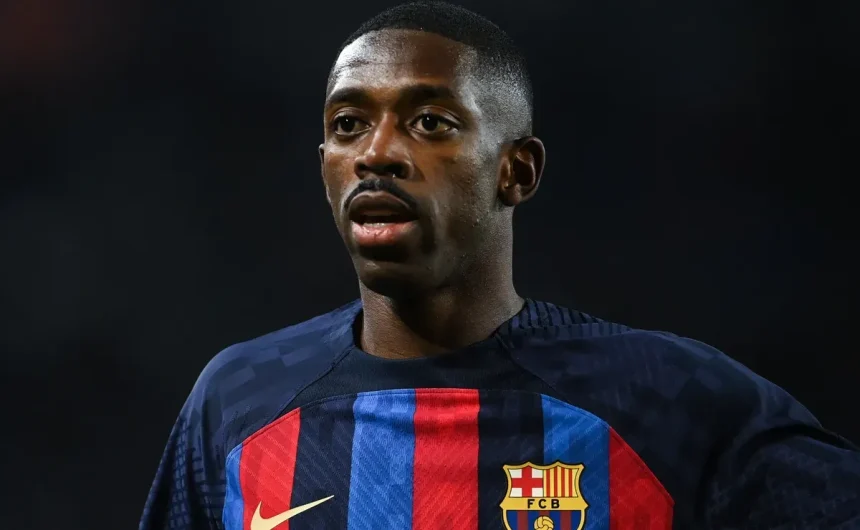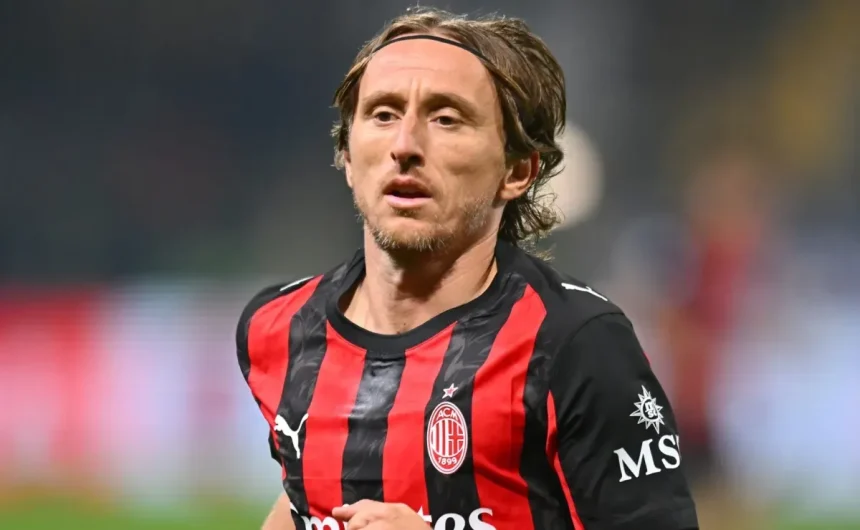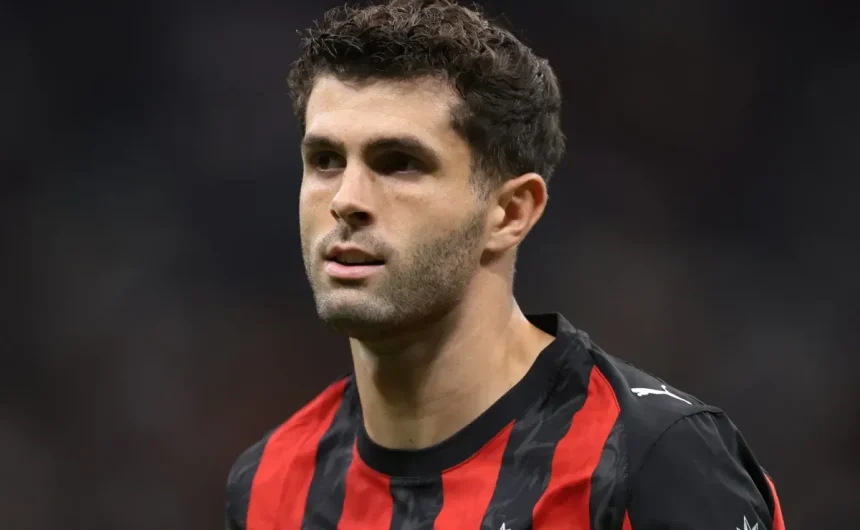La Liga’s transfer market has always been a theater of ambition and spectacle. Clubs aren’t just signing players—they’re making statements, reshaping squads in August 2025 with arrivals that capture global attention and redefine Spain’s soccer hierarchy.
Some deals have stunned the world entirely. Highlighting only incoming transfers, these are the most expensive transfers ever—moves that showcase the league’s financial muscle, echoing the stature of the most successful clubs by titles won.
Stars like Cristiano Ronaldo, Neymar and Lionel Messi have turned transfers into historic events. Each record signing leaves a lasting mark, linking the league’s biggest players signed with its all-time top goalscorers and rewriting what’s possible in soccer.
see also
La Liga 2025 TV Schedule USA and Streaming Links
Dani Olmo – FC Barcelona
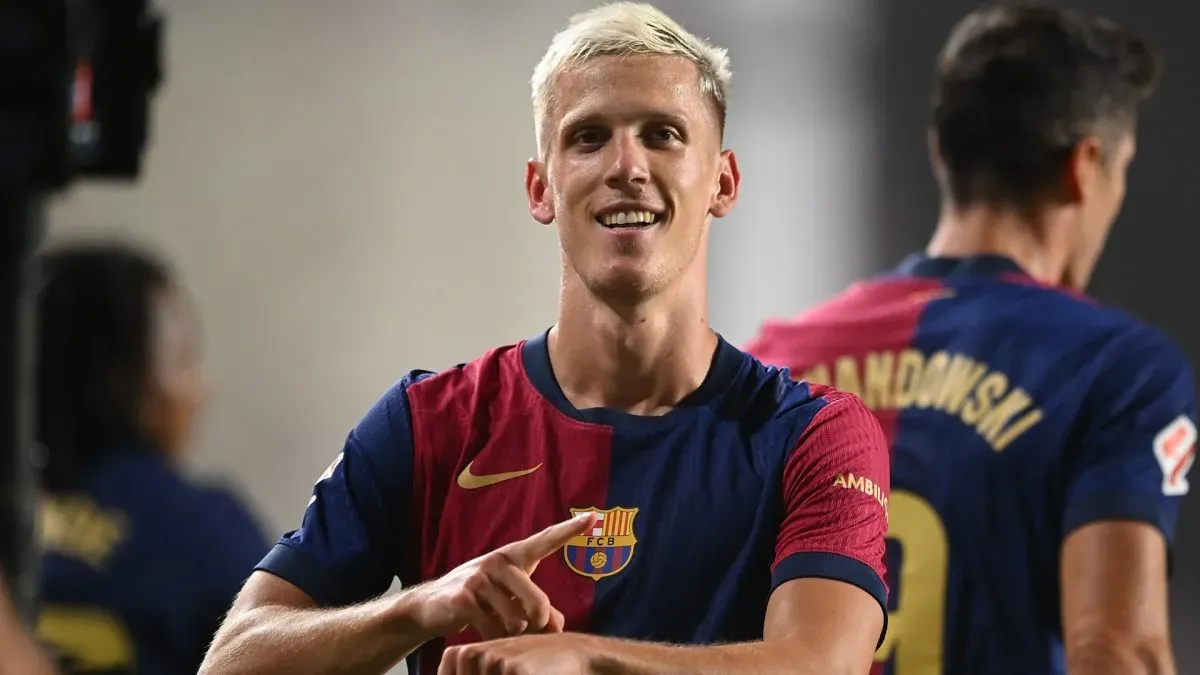
Dani Olmo of FC Barcelona celebrates scoring his sides second goal during the La Liga match between Rayo Vallecano and FC Barcelona at Estadio de Vallecas in 2024. (Source: Denis Doyle/Getty Images)
Dani Olmo’s 2023 transfer from RB Leipzig to Barcelona, valued at €55 million, represented a strategic acquisition aimed at blending creativity and versatility in the Catalan attack. The Spanish forward, known for his intelligent movement, technical skill, and goal contributions, fit Barcelona’s modernized approach of flexible attacking patterns.
His adaptability—capable of playing across the midfield and front line—made him an ideal asset to rotate alongside emerging talents and established stars. Beyond his on-field abilities, the signing reflected Barcelona’s ongoing emphasis on acquiring technically gifted players in their prime, capable of delivering immediate impact while also holding significant long-term value both sportingly and commercially.
Raphinha – FC Barcelona
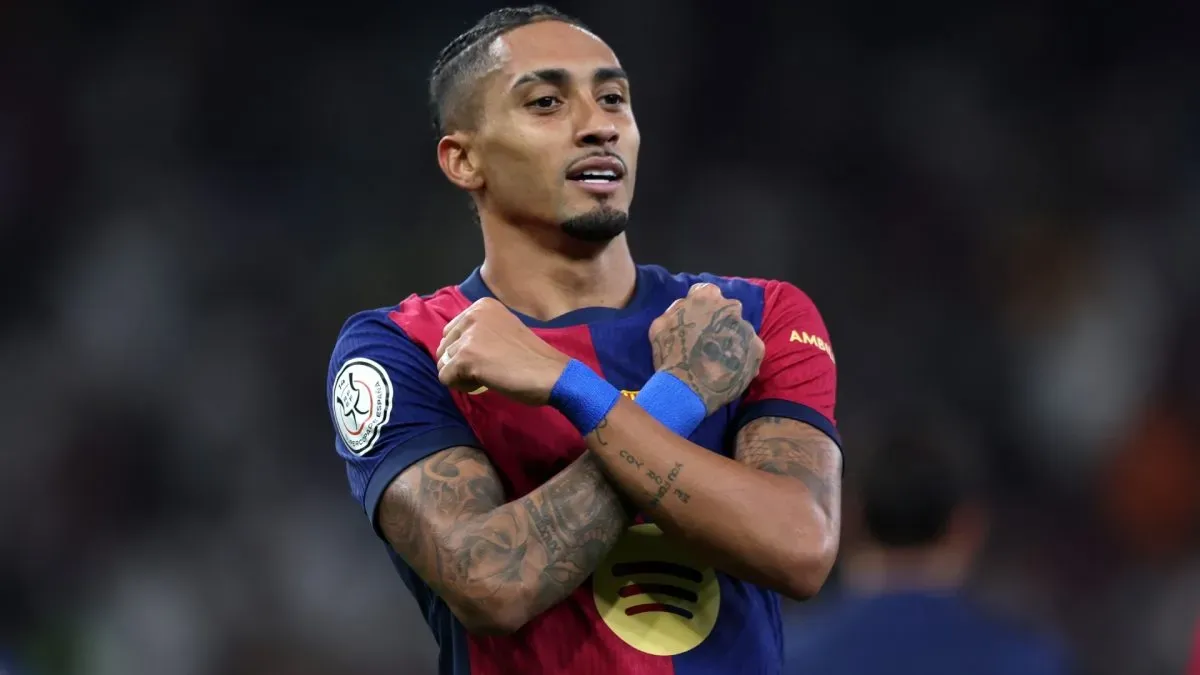
Raphinha of FC Barcelona celebrates scoring his team’s fifth goal during the Spanish Super Cup Final between Real Madrid and FC Barcelona in 2025. (Source: Yasser Bakhsh/Getty Images)
Raphinha’s transfer to Barcelona from Leeds United in 2022 for €58 million was seen as a bold move to reinforce the club’s attacking options following the departure of key forwards. The Brazilian winger arrived in La Liga with a reputation for dazzling dribbles, pace, and clinical finishing, quickly becoming a focal point of Barcelona’s offensive strategy.
His ability to cut inside from the right, combine with midfield creators, and exploit spaces behind defenders brought immediate dynamism to the team. Raphinha has been instrumental in delivering goals and assists, showcasing that Barcelona’s investment in young, explosive talent continues to define the club’s transfer philosophy in the modern era.
Miralem Pjanic – FC Barcelona

Miralem Pjanic of FC Barcelona runs with the ball during the UEFA Champions League Group G stage match between FC Barcelona and Juventus at Camp Nou on December 08, 2020. (Source: David Ramos/Getty Images)
Miralem Pjanic’s 2020 move from Juventus to Barcelona was part of a high-profile swap deal involving Arthur Melo, valued around €60 million. The Bosnian midfielder arrived with a reputation for precision passing, tactical intelligence, and set-piece mastery.
Barcelona envisioned him as the linchpin of their midfield, capable of controlling tempo and linking defense to attack seamlessly. However, his tenure coincided with a turbulent period for the club, marked by managerial changes, financial strain, and inconsistency in performance.
Despite showing flashes of brilliance, particularly with long-range distribution and free kicks, his struggled to fully integrate into Barcelona’s evolving system. His transfer illustrates both the promise and challenges of high-stakes mid-career signings in top-tier clubs.
Diego Costa – Atletico Madrid
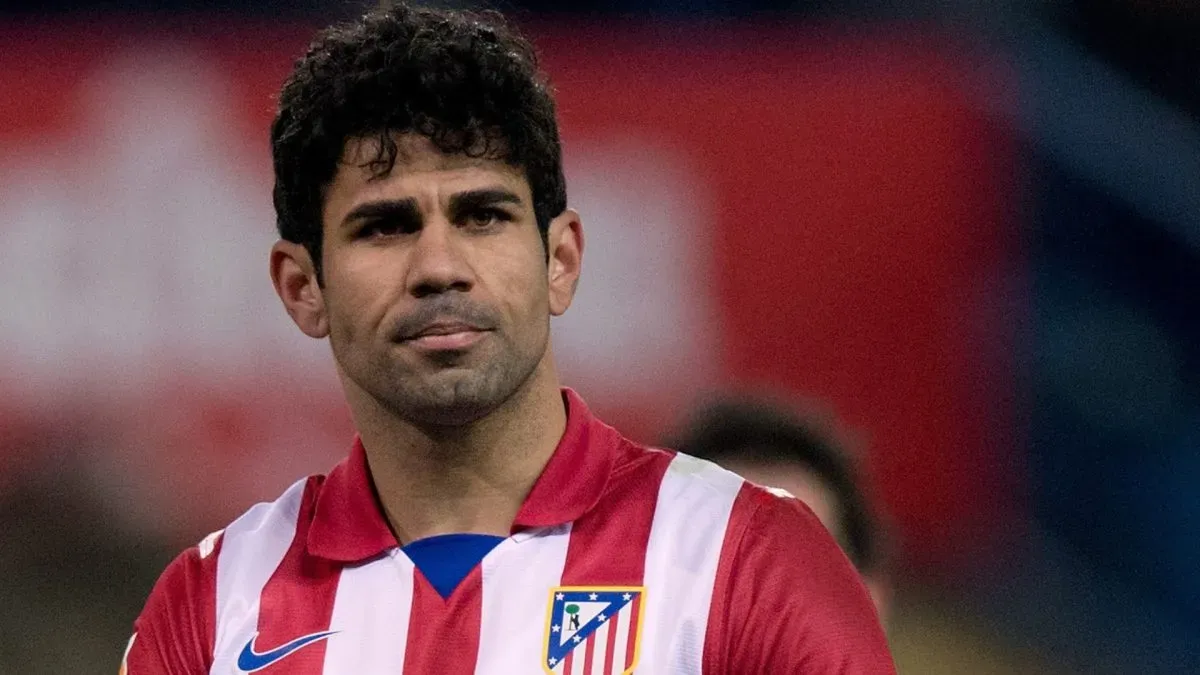
Diego Costa of Atletico de Madrid celebrates scoring their third goal during the La Liga match between Club Atletico de Madrid and Levante UD in 2013. (Source: Gonzalo Arroyo Moreno/Getty Images)
Diego Costa‘s 2018 return to Atlético Madrid from Chelsea for a reported fee of €60 million marked the end of a tumultuous period for the Brazilian-born Spanish striker. He had previously been a key figure in Atlético’s attack before his move to Chelsea, where he enjoyed success in the Premier League.
However, his relationship with Chelsea’s management deteriorated, leading to his return to Madrid. At Atlético, his aggressive playing style and goal-scoring ability were welcomed, and he played a pivotal role in the team’s offensive line. His transfer highlighted Atlético’s strategy of re-signing key players to strengthen their squad and maintain competitiveness in La Liga.
Luis Figo – Real Madrid
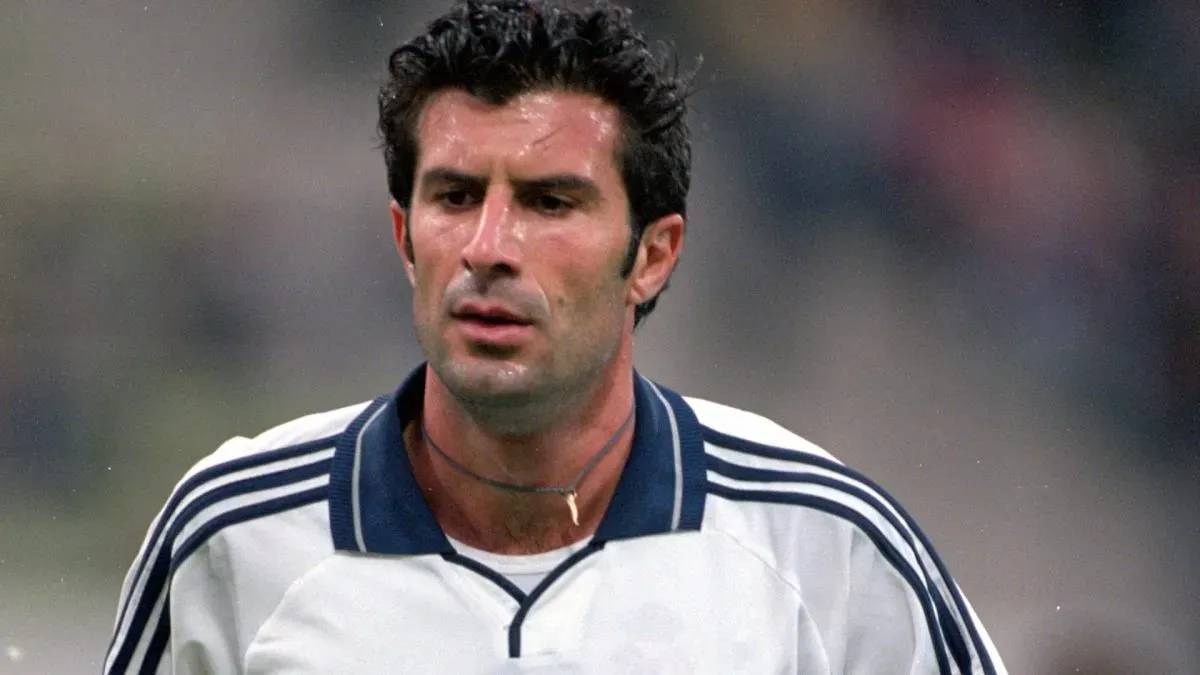
Luis Figo of Real Madrid in action during the Bayern Munich Centenary pre-season friendly tournament match against Galatasaray in 2000. (Source: Ross Kinnaird /Allsport)
Luis Figo‘s 2000 transfer from FC Barcelona to Real Madrid for a then-world record fee of €60 million remains one of the most controversial and significant moves in football history.
The Portuguese winger’s switch from one of Barcelona’s most beloved players to their archrivals was met with outrage from Barça fans, culminating in the infamous “El Clásico del cochinillo,” where a pig’s head was thrown onto the pitch in protest.
Despite the initial backlash, his impact on the field was undeniable. He helped lead Madrid to multiple La Liga titles and the 2002 UEFA Champions League. His transfer not only changed the landscape of Spanish soccer but also set the stage for the era of the Galácticos at Real Madrid.
Dean Huijsen – Real Madrid

Dean Huijsen #24 of Real Madrid during the FIFA Club World Cup 2025 group H match between Real Madrid CF and CF Pachuca in 2025. (Source: Richard Pelham/Getty Images)
In 2025, Real Madrid secured the services of Dutch defender Dean Huijsen from AFC Bournemouth for a reported fee of €62.50 million, making him the most expensive defender in the club’s history.
Dean, at just 20 years old, was seen as a long-term investment for Madrid’s defense. Standing at 1.97 meters, he brings a commanding presence to the backline, coupled with impressive technical skills and composure on the ball.
Having represented Spain at various youth levels, his versatility and potential make him a valuable addition to Madrid’s squad. His arrival signifies the club’s commitment to building a strong defensive foundation for the future.
Luka Jovic – Real Madrid
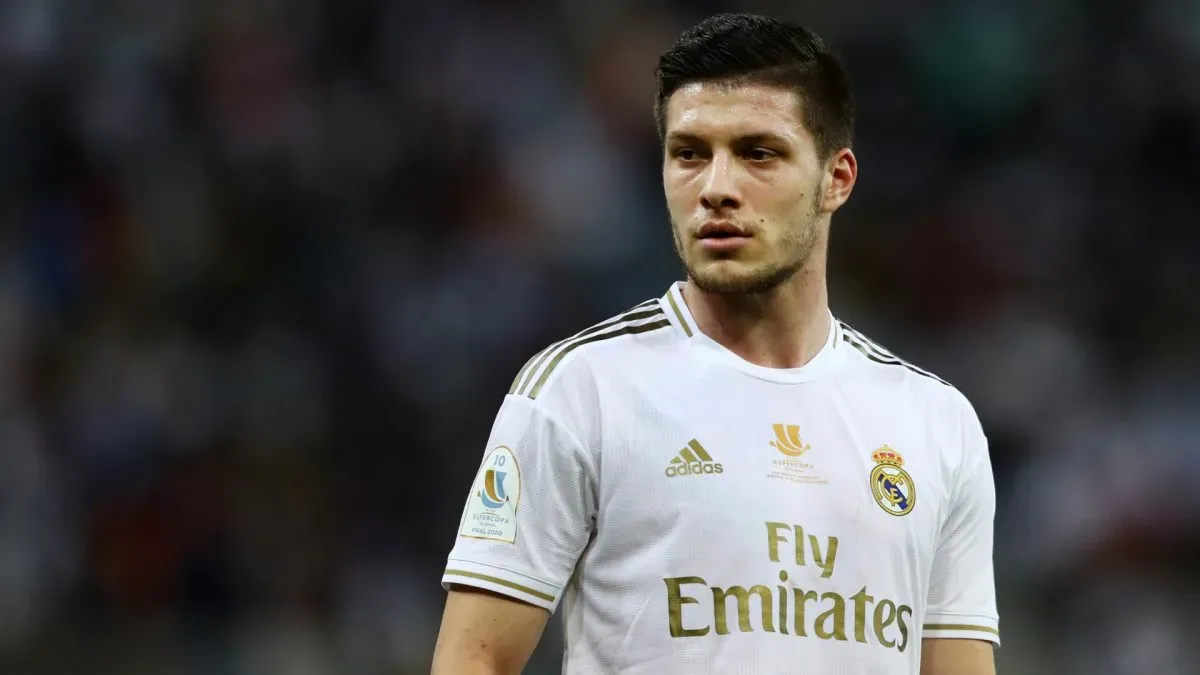
Luka Jovic of Real Madrid looks on during the Supercopa de Espana Final match between Real Madrid and Club Atletico de Madrid at King Abdullah Sports City on January 12, 2020. (Source: Francois Nel/Getty Images)
Luka Jovic‘s 2019 transfer from Eintracht Frankfurt to Real Madrid for a reported fee of €63 million was seen as a statement of intent by the Spanish giants, securing one of Europe’s most promising young strikers. He had enjoyed a prolific season in the Bundesliga, scoring goals at an impressive rate. However, his time in Madrid was less successful.
The Serbian forward struggled to adapt to the team’s style of play and found himself behind Karim Benzema in the pecking order. After a loan spell back at Eintracht Frankfurt, his future at Madrid became uncertain. In 2025, he made a move to AEK Athens, seeking regular playing time and a fresh start in his career.
Kaka – Real Madrid

Kaka of Real Madrid smiles prior to the Champions League group C match between Real Madrid and Marseille at the Estadio Santiago Bernabeu on September 30, 2009. (Source: Jasper Juinen/Getty Images)
In 2009, Brazilian playmaker Kaka made a high-profile move from AC Milan to Real Madrid for a reported fee of €67 million, marking him as one of the marquee signings in the club’s Galáctico era.
He arrived in Madrid with a stellar reputation, having won the Ballon d’Or in 2007 and being recognized as one of the world’s top players. However, his time at Madrid was plagued by injuries and inconsistent performances.
Despite flashes of brilliance, he struggled to replicate his Milan form and was eventually sold back to Milan in 2013. His transfer to Madrid, while initially promising, ultimately did not yield the expected returns.
Zlatan Ibrahimovic – FC Barcelona

Zlatan Ibrahimovic of FC Barcelona celebrates after scoring during the La Liga match between Barcelona and Osasuna at the Camp Nou Stadium on March 24, 2010. (Source: Manuel Queimadelos Alonso/Getty Images)
Zlatan Ibrahimovic‘s 2009 move from Inter Milan to FC Barcelona was one of the most talked-about transfers in soccer history. The deal, reportedly worth €69.5 million, included the exchange of Samuel Eto’o and a loan for Alexander Hleb, making him the centerpiece of Barcelona’s attack.
Initially, the Swedish striker made an immediate impact, scoring in his first five league matches. However, his relationship with then-coach Pep Guardiola soured, leading to a turbulent season.
Despite his undeniable talent, his time at Barcelona was short-lived, and he was loaned out to AC Milan in 2010, where he continued to showcase his prowess, albeit outside of La Liga.
Thomas Lemar – Atlético Madrid
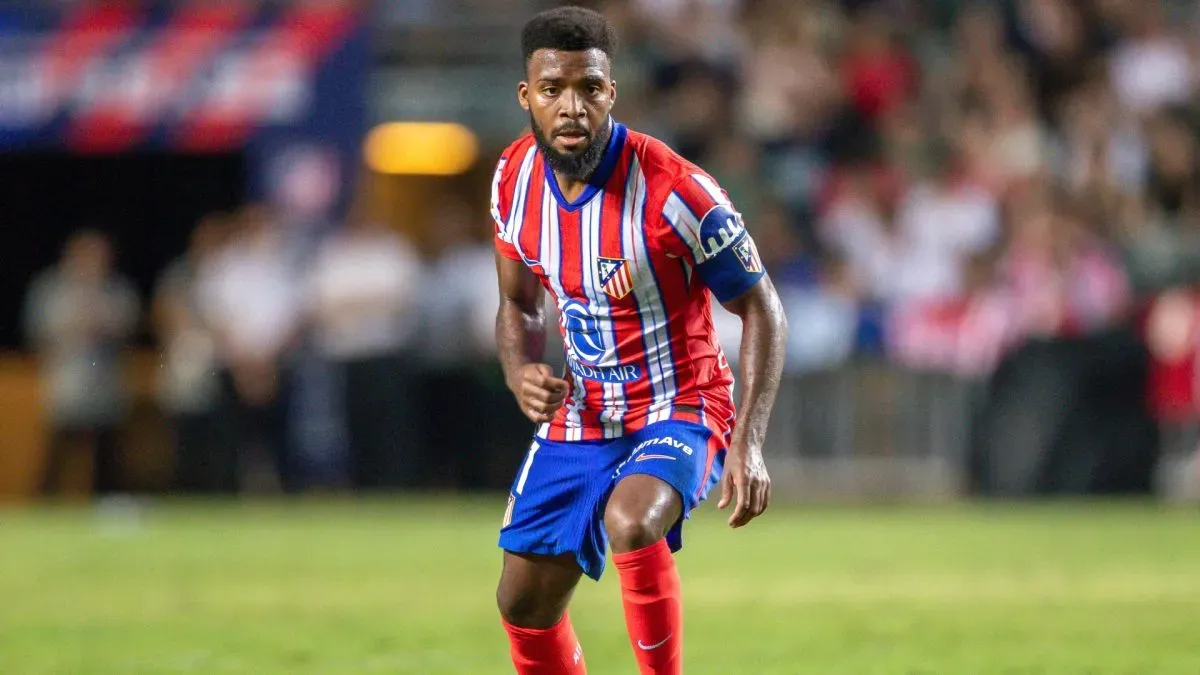
Thomas Lemar handles the ball during the Kitchee v Atletico de Madrid – BOC Life Cup at Hong Kong Stadium on August 7, 2024. (Source: Yu Chun Christopher Wong/Eurasia Sport Images/Getty Images)
Thomas Lemar‘s 2018 transfer from AS Monaco to Atlético Madrid was a significant investment, with the Spanish club paying €72 million for the French winger. He arrived at Atlético with high expectations, having been a key figure in Monaco’s Ligue 1 title-winning team and their deep run in the UEFA Champions League.
However, his time in Madrid has been underwhelming. Despite his technical skills and potential, he has struggled to find consistent form, often being relegated to a rotational role.
James Rodriguez – Real Madrid
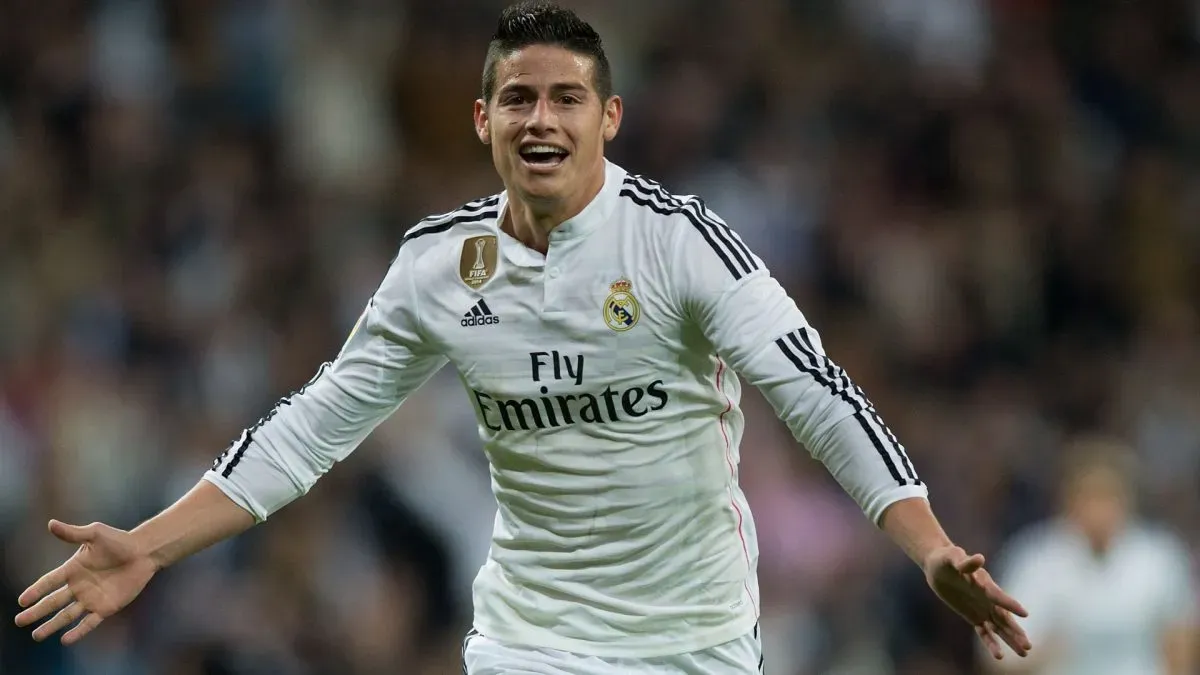
James Rodriguez of Real Madrid CF celebrates scoring their second goal during the La Liga match in 2015. (Source: Gonzalo Arroyo Moreno/Getty Images)
In 2014, James Rodriguez made a high-profile move from AS Monaco to Real Madrid for a reported fee of €75 million, marking him as one of the most expensive signings in La Liga history at the time.
The Colombian attacking midfielder had just captured global attention with his standout performances at the 2014 FIFA World Cup, where he won the Golden Boot. At Madrid, he initially thrived, showcasing his exceptional vision, precise passing, and knack for scoring crucial goals.
However, over time, his consistency waned, and he found himself loaned out to Bayern Munich in 2017. Despite flashes of brilliance, he struggled to secure a permanent spot in Madrid’s starting XI.
After a brief return to Madrid, he joined Rayo Vallecano in 2024, though his impact was limited. In early 2025, he made a move to Liga MX’s Club León, concluding a chapter in La Liga that began with immense promise but was marred by inconsistency and missed opportunities.
Julian Alvarez – Real Madrid
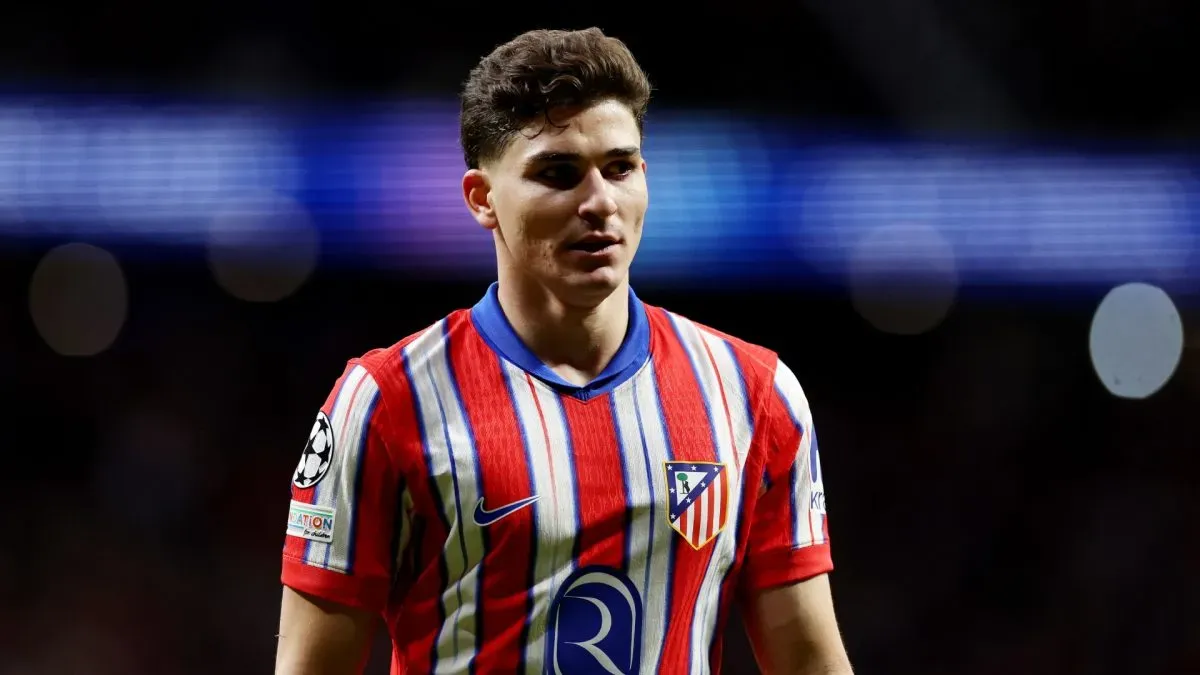
Julian Alvarez of Atletico de Madrid looks on during the UEFA Champions League 2024/25 Round of 16 second leg match in 2025. (Source: Florencia Tan Jun/Getty Images)
While Julian Alvarez has not yet officially moved to La Liga as of August 2025, speculation around the Argentine forward’s potential transfer of €75m is relentless due to his prolific form with Manchester City.
Known for his versatility across the frontline, clinical finishing, and intelligent movement, he represents the archetype of a modern striker capable of thriving in any top European league. Any deal bringing him to Real Madrid or Barcelona would likely involve a high fee, reflecting both his talent and the market trend of investing heavily in young, high-potential forwards.
Beyond numbers, he embodies the next wave of La Liga stars who could combine sporting impact with commercial value, continuing the legacy of record-breaking signings that define the financial and competitive fabric of Spain’s top flight.
Zinedine Zidane – Real Madrid

Zinedine Zidane of Real Madrid on the ball during the Real Madrid Centenary Tournament match between Real Madrid and Liverpool at the Santiago Bernabeu Stadium in 2002. (Source: Shaun Botterill/Getty Images)
In 2001, Real Madrid made a bold statement to the soccer world by signing Zinedine Zidane from Juventus for a staggering €77.5 million, a world-record fee at the time. Unlike many big-money transfers, his move immediately justified the investment, as the French maestro dazzled with his vision, elegance, and ability to control matches single-handedly.
His arrival marked the beginning of Madrid’s legendary Galáctico era, blending sporting brilliance with global marketing power, as he became the face of the club both on and off the field.
Beyond the trophies he helped win—including La Liga titles and the UEFA Champions League—his transfer symbolized a new era where clubs were willing to pay astronomical fees for players who could transform the culture, identity, and international prestige of a soccer institution.
Aurelien Tchouameni – Real Madrid
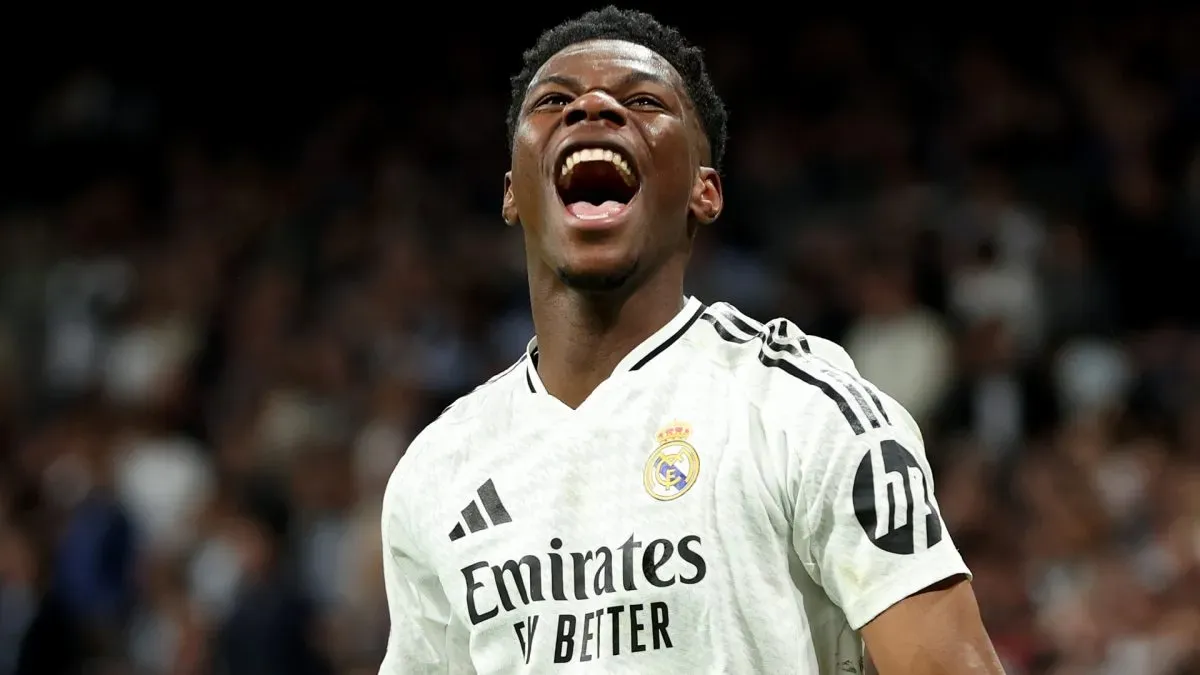
Aurelien Tchouameni of Real Madrid celebrates after he scores his teams third goal during the Copa del Rey semifinal match between Real Madrid and Real Sociedad in 2025. (Source: Florencia Tan Jun/Getty Images)
Aurelien Tchouameni’s transfer to Real Madrid in 2022 for around €80 million exemplified the club’s pursuit of youth combined with tactical intelligence in midfield. At 22, the French defensive midfielder had already established himself in Monaco and with the national team, known for his positional discipline, ball-winning ability, and composure under pressure.
Madrid’s investment reflected not only his immediate quality but also his potential to form the backbone of the team for the coming decade. His style—blending defensive solidity with smooth distribution—fit perfectly into Carlo Ancelotti’s system, adding balance and depth.
The transfer also highlighted La Liga’s modern trend: splashing significant sums on young talent capable of combining tactical versatility with long-term resale and performance value.
Luis Suarez – FC Barcelona
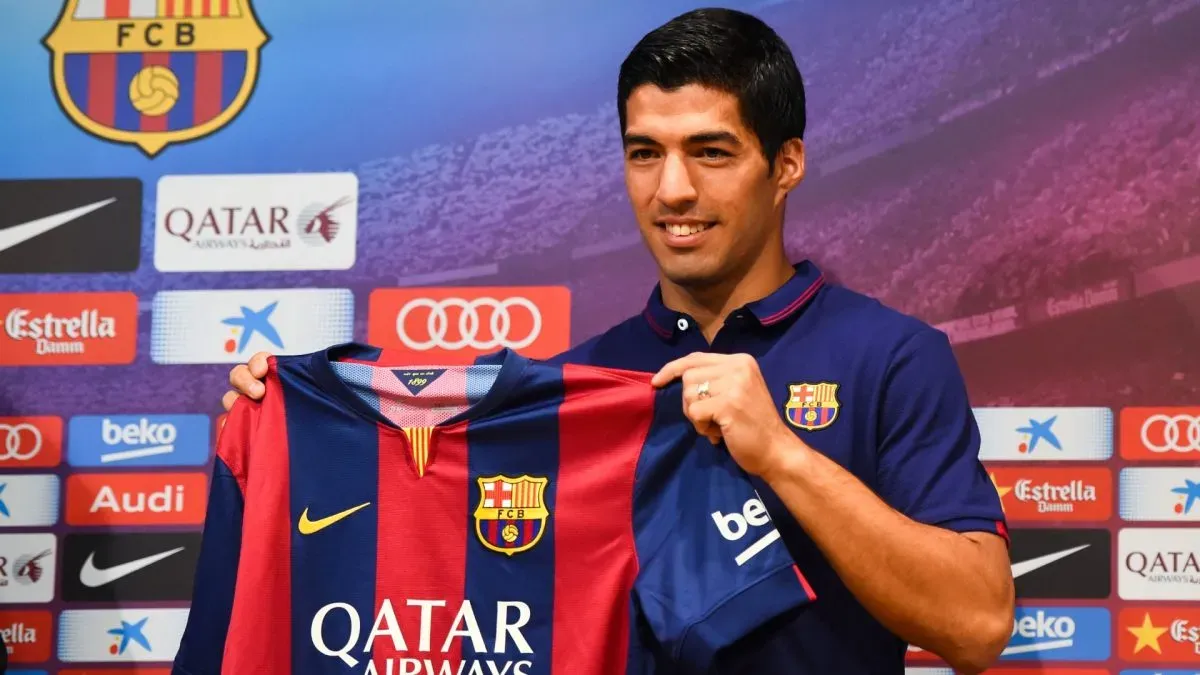
Luis Suarez of FC Barcelona poses for the media during a press conference as part of his presentation as new FC Barcelona player at Camp Nou on August 19, 2014. (Source: David Ramos/Getty Images)
Luis Suarez’s move from Liverpool to Barcelona in 2014 for €81.72 million was more than just a signing; it was the acquisition of a proven predator who could transform La Liga’s scoring charts. He arrived with a reputation for lethal finishing, relentless pressing, and moments of controversy that often made headlines.
At Camp Nou, he immediately complemented Messi and Neymar, forming the celebrated “MSN” trio that would dominate European soccer for years. His impact was instant: scoring crucial goals, winning titles, and becoming one of Barça’s most dependable forwards.
Financially, the fee reflected both his proven quality and his potential to generate commercial returns, while sporting-wise, it addressed a crucial need in attack. His transfer stands as a benchmark of strategic investment, combining experience, skill, and leadership in a single, high-priced package.
Frenkie de Jong – FC Barcelona
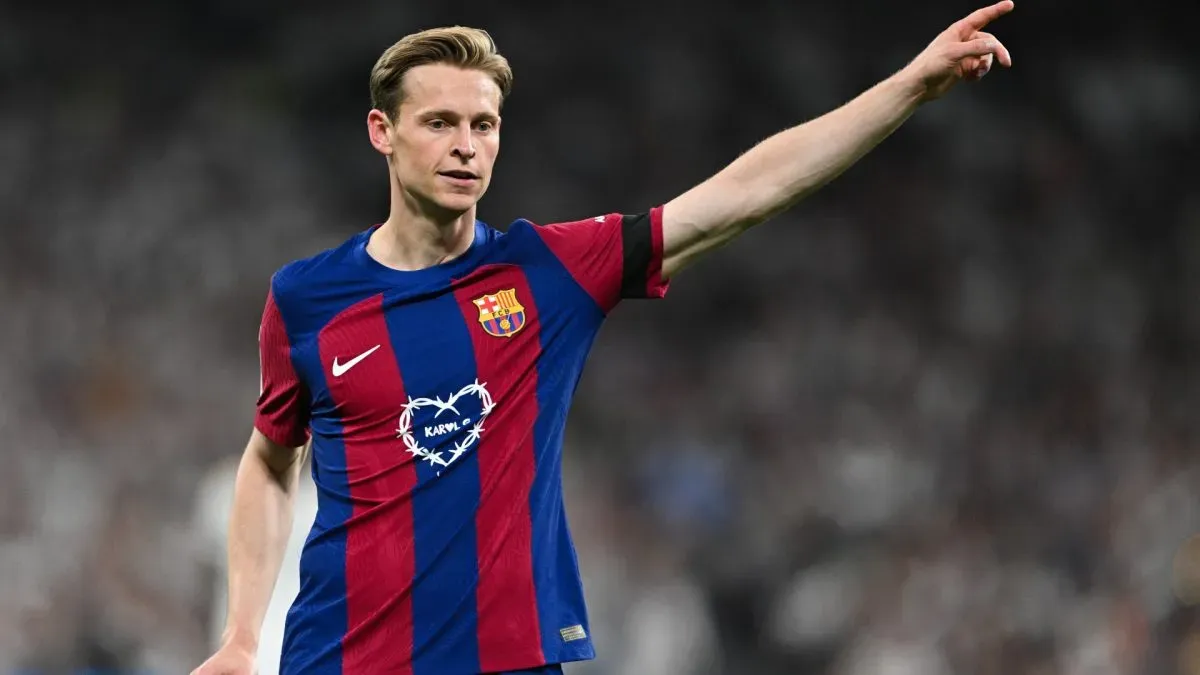
Frenkie de Jong of FC Barcelona reacts during the LaLiga EA Sports match between Real Madrid CF and FC Barcelona at Estadio Santiago Bernabeu on April 21, 2024. (Source: David Ramos/Getty Images)
Frenkie de Jong’s arrival at Barcelona in July 2019 for €86 million was a statement of intent by the Catalan giants, signaling a focus on youth, technical mastery, and long-term stability in midfield. Coming from Ajax, where he had already impressed with his calmness on the ball, vision, and tactical intelligence, he was expected to be the heartbeat of Barça’s midfield for years to come.
His style—dominating possession, driving attacks from deep, and breaking opposition lines—was precisely what a club in transition needed after the departure of stalwarts like Iniesta and Busquets.
Beyond his footballing qualities, his transfer illustrated the financial pressures facing Barcelona, as the club stretched to secure one of Europe’s brightest talents, hoping that his presence would stabilize both the team’s performance and its long-term strategic vision.
Neymar – FC Barcelona

Neymar #11 of Barcelona reacts in the second half against Real Madrid during their International Champions Cup 2017 match at Hard Rock Stadium on July 29, 2017. (Source: Mike Ehrmann/Getty Images)
Neymar’s 2013 transfer from Santos to Barcelona is one of soccer’s most analyzed moves, officially costing €57.1 million but ultimately ballooning to around €88 million once hidden fees and agent payments were included. At just 21, the Brazilian forward brought flair, creativity, and a commercial magnetism that few players can match.
He quickly formed a legendary attacking trio with Messi and Suárez, rewriting scoring records and dazzling fans across the globe. His transfer also exposed the complexity and opacity of soccer finances, sparking legal investigations and debates about transparency.
On the field, his impact was immediate and transformative, but off it, the deal symbolized the increasingly high-stakes nature of La Liga’s biggest clubs, willing to spend tens of millions for both talent and brand value.
Cristiano Ronaldo – Real Madrid
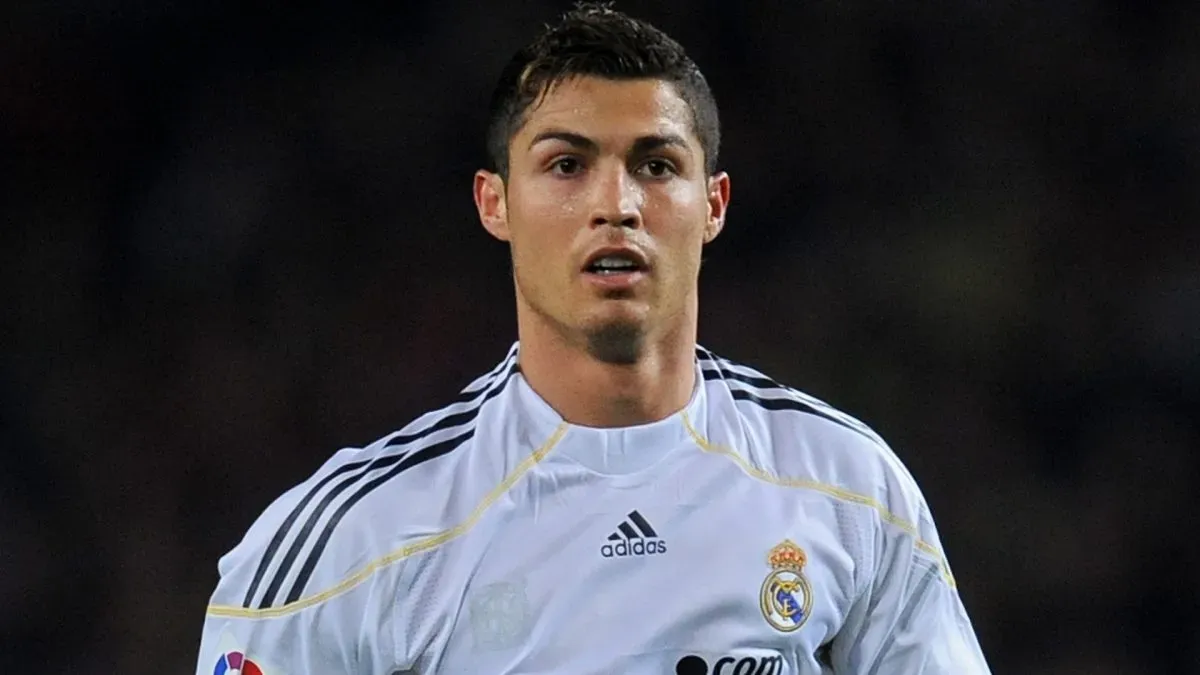
Cristiano Ronaldo of Real Madrid looks on during the La Liga match between Barcelona and Real Madrid at the Camp Nou Stadium on November 29, 2009. (Source: Jasper Juinen/Getty Images)
Cristiano Ronaldo’s arrival at Real Madrid in 2009 for €94 million was more than a record-breaking signing—it was a seismic shift for La Liga itself. Coming off a period of dominance with Manchester United, he brought unparalleled goal-scoring prowess, physicality, and market appeal.
Over his nine seasons at the Bernabéu, he amassed 450 goals in 438 appearances, won four Champions League titles, and earned four Ballon d’Ors, justifying the enormous fee many initially questioned.
Beyond the numbers, his transfer helped globalize Real Madrid’s brand, attracting sponsorships, fans, and media attention worldwide. It was a signing that perfectly blended sporting ambition with commercial strategy, and it set a benchmark for what elite clubs were willing to pay for generational talent.
Gareth Bale – Real Madrid
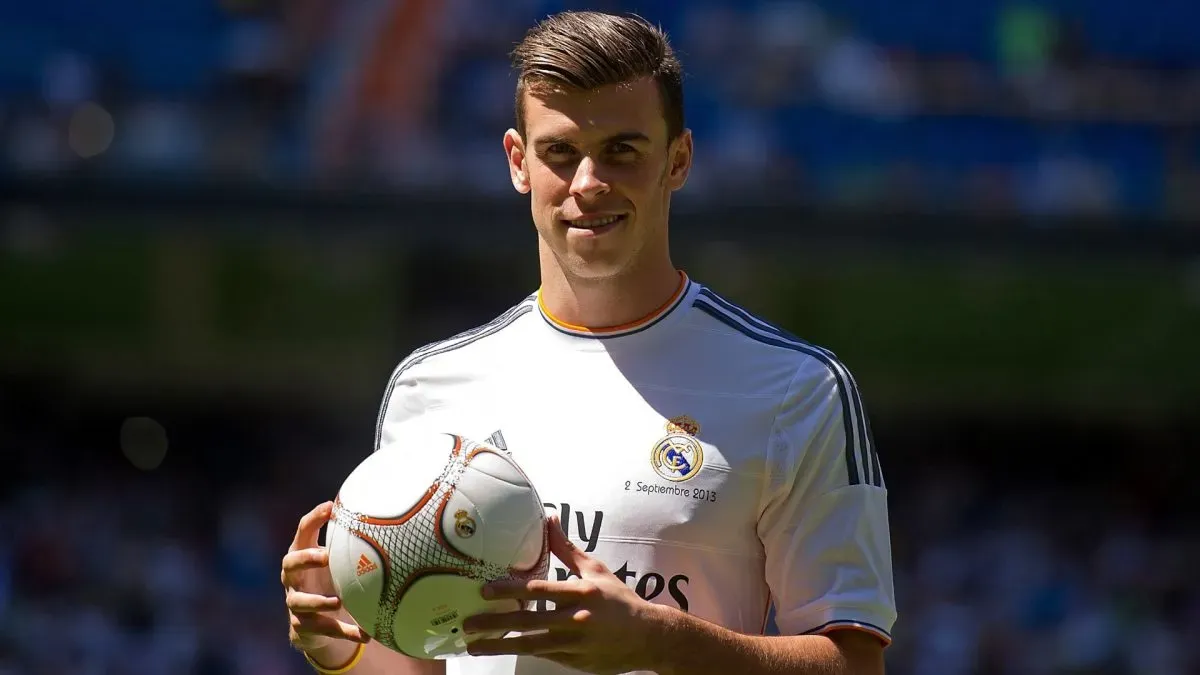
Gareth Bale poses for photographs in his new Real Madrid shirt during his official unveiling at estadio Santiago Bernabeu on September 2, 2013. (Source: Denis Doyle/Getty Images)
Gareth Bale’s transfer to Real Madrid in 2013 remains one of the most iconic and expensive in La Liga history, with the Welsh winger arriving from Tottenham Hotspur for €101 million. The move marked the beginning of a new Galáctico era under Florentino Pérez, blending flair, speed, and marketability in one package. He brought moments of brilliance, most memorably his stunning goals in the Champions League finals, cementing his status as a clutch performer.
Yet, injuries and inconsistent form often tempered expectations, leading to a complicated legacy: adored for heroics in Europe but sometimes criticized for underwhelming league campaigns. His transfer not only redefined the financial ceiling for wingers but also exemplified Madrid’s willingness to invest heavily for both sporting and global marketing impact.
Antoine Griezmann – FC Barcelona
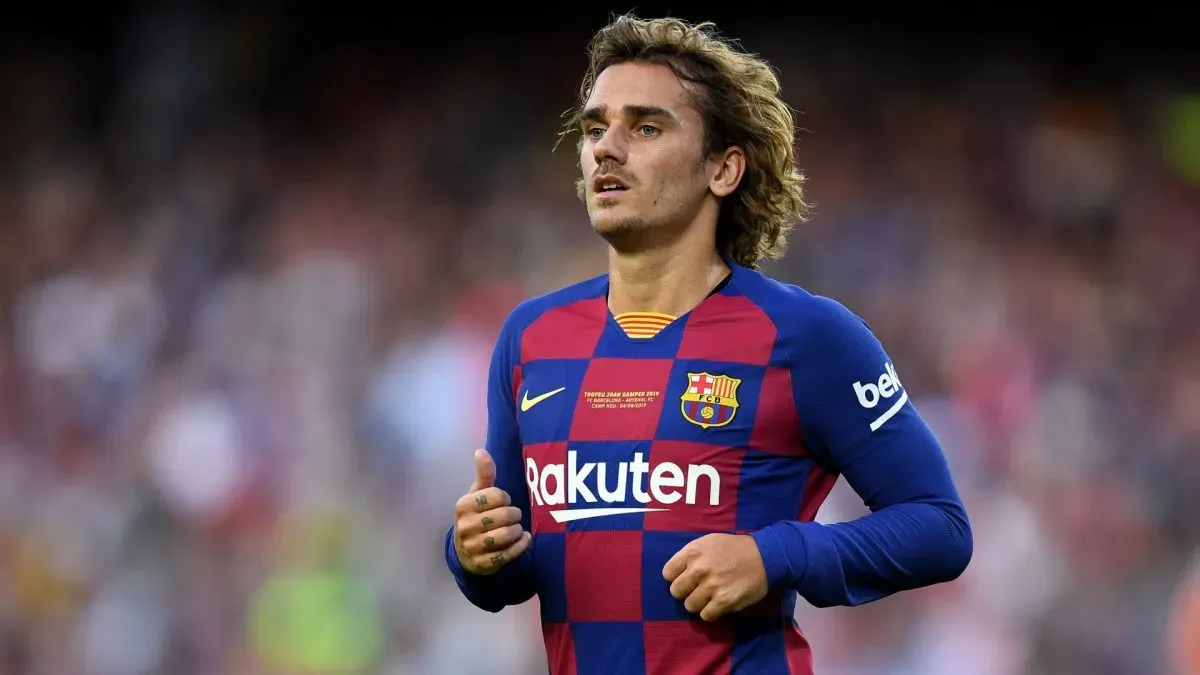
Antoine Griezmann of FC Barcelona looks on during the Joan Gamper trophy friendly match between FC Barcelona and Arsenal at Nou Camp on August 04, 2019. (Source: David Ramos/Getty Images)
The saga surrounding Antoine Griezmann’s 2019 move to Barcelona was as dramatic as the fee itself. After publicly rejecting the club in a documentary a year earlier, Barça finally triggered his €120 million release clause at Atlético Madrid.
The French forward arrived as one of the most prolific attackers in Europe, expected to seamlessly complement Messi and Suárez. Yet, despite flashes of quality, he often looked out of place in a system that never quite suited his skill set.
The financial weight of the transfer, coupled with the pandemic’s economic impact, also intensified scrutiny over his performances. Ultimately, his return to Atlético years later felt like an acknowledgment that the costly marriage between him and Barça had never lived up to the blockbuster billing.
Eden Hazard – Real Madrid
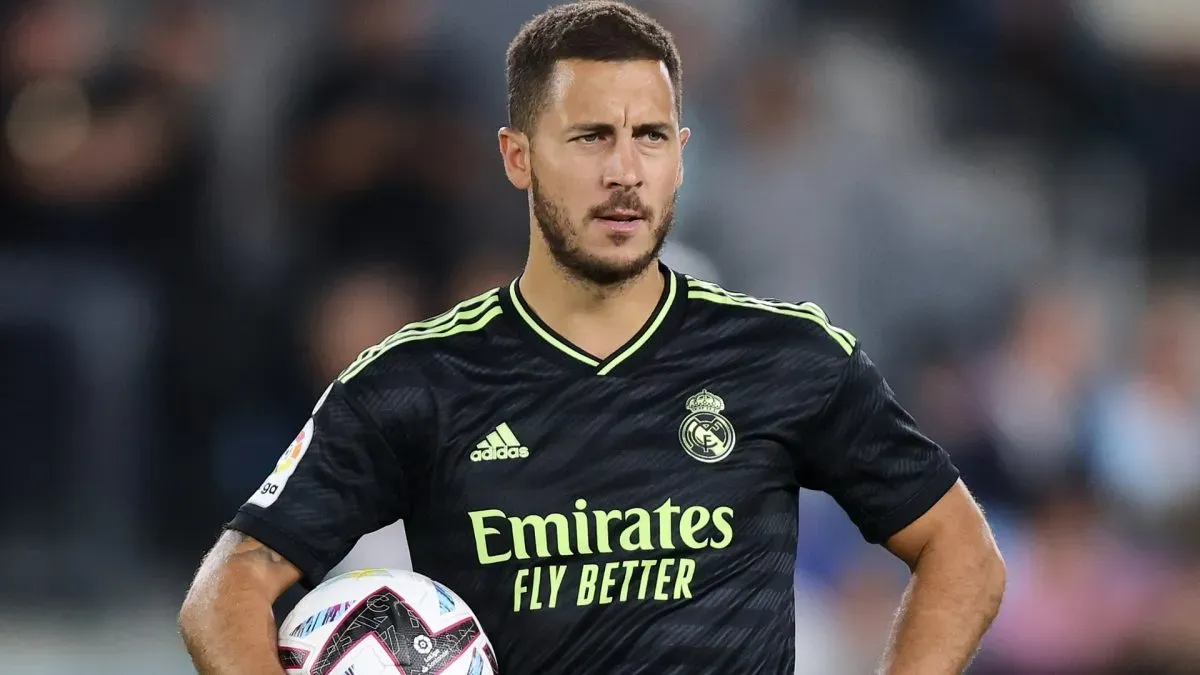
Eden Hazard of Real Madrid CF reacts before shooting a penalty during the LaLiga Santander match between RC Celta de Vigo and Real Madrid CF in 2022. (Source: Gonzalo Arroyo Moreno/Getty Images)
In 2019, Real Madrid’s pursuit of a new Galáctico led them to Eden Hazard, who had just orchestrated Chelsea’s Europa League triumph with a man-of-the-match performance in the final. To secure him, Madrid paid €120.80 million, with the possibility of add-ons taking the deal even higher.
Expectations were astronomical: He was supposed to replace Cristiano Ronaldo as the face of the club. However, what followed was one of the most disappointing chapters in recent La Liga history.
Injuries plagued his stay, reducing his once-electric dribbling and explosiveness to rare glimpses, and he never truly established himself as a starter. For Real Madrid, the Belgian’s transfer stands as a cautionary tale—proof that not all marquee signings deliver, no matter the pedigree.
Jude Bellingham – Real Madrid
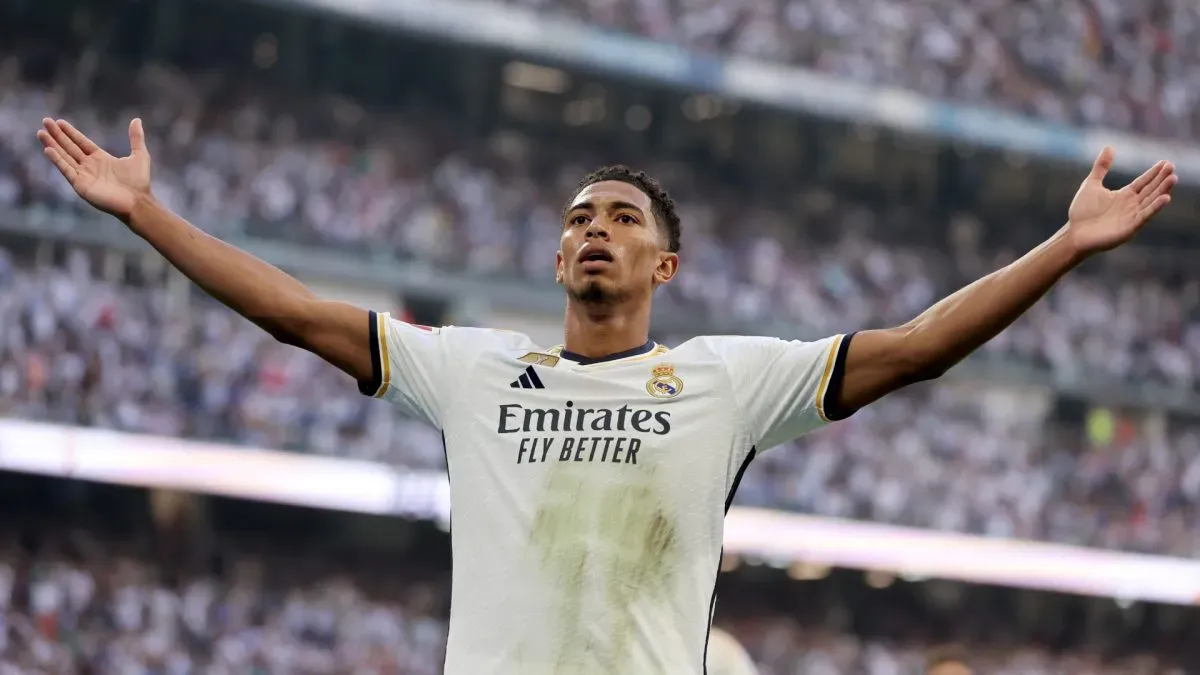
Jude Bellingham of Real Madrid celebrates after scoring the team’s second goal during the LaLiga EA Sports match between Real Madrid CF and CA Osasuna in 2023. (Source: Florencia Tan Jun/Getty Images)
When Real Madrid decided to invest in Jude Bellingham in the summer of 2023, they weren’t just buying another midfielder—they were securing the cornerstone of their next generation. At just 20 years old, the Englishman arrived from Borussia Dortmund for a fee of €127.00m, a record figure for an English player in La Liga.
Bellingham’s immediate impact silenced any doubts: a mix of elegance, stamina, and goal-scoring instinct that made him indispensable almost overnight. His arrival also reflected Real’s clear strategy of gradually replacing legends like Kroos and Modrić while ensuring continuity at the very highest level.
Beyond numbers, his signing symbolized Madrid’s ability to attract young superstars despite heavy competition from the Premier League, reaffirming their status as the ultimate destination for soccer’s elite.
Joao Felix – Atletico Madrid
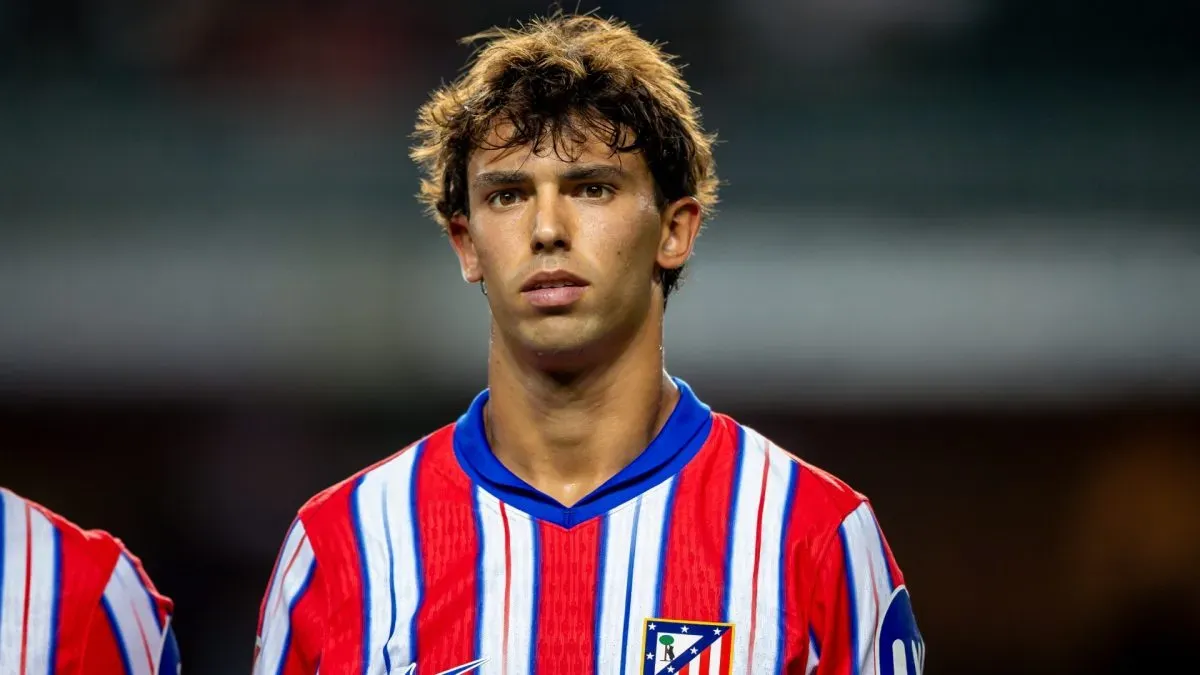
Joao Felix of Atletico de Madrid reacts prior to the Kitchee v Atletico de Madrid – BOC Life Cup at Hong Kong Stadium on August 7, 2024. (Source: Yu Chun Christopher Wong/Eurasia Sport Images/Getty Images)
Joao Felix’s 2019 transfer from Benfica to Atlético Madrid for €127.20 million was a record-breaking move that immediately placed the Portuguese forward among the most expensive players in soccer history. Atlético viewed him as the long-term heir to their attacking line, combining creativity, technical brilliance, and goal-scoring instinct at just 19 years old.
His arrival coincided with Antoine Griezmann’s departure, and the club placed enormous expectations on the young prodigy to lead their next era. Despite flashes of sublime talent and moments of decisive impact, his adaptation to Diego Simeone’s system has been challenging, with inconsistent form and tactical adjustments affecting his performance.
Nevertheless, the investment underscores Atlético Madrid’s ambition to compete financially and strategically with Europe’s elite clubs, betting on youth and potential to shape their future.
Philippe Coutinho – FC Barcelona
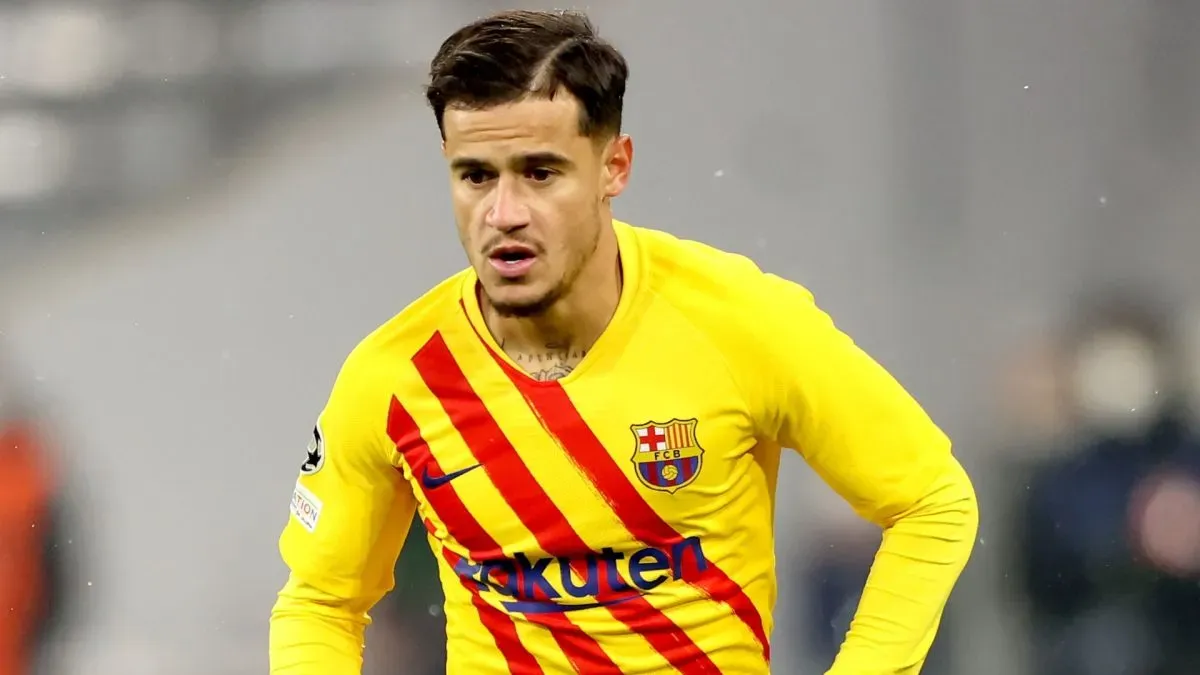
Philippe Coutinho of FC Barcelona runs with the ball during the UEFA Champions League group E match between FC Bayern München and FC Barcelona in 2021. (Source: Alexander Hassenstein/Getty Images)
Barcelona shattered La Liga’s transfer record in January 2018 when they splashed out €135 million in variables to acquire Philippe Coutinho from Liverpool. The move was heralded as the signing of “the heir to Iniesta,” yet the Brazilian struggled to adapt—never reaching his peak form and even slumped so dramatically that he scored against Barça in Bayern’s infamous 8-2 demolition.
Ousmane Dembele – FC Barcelona
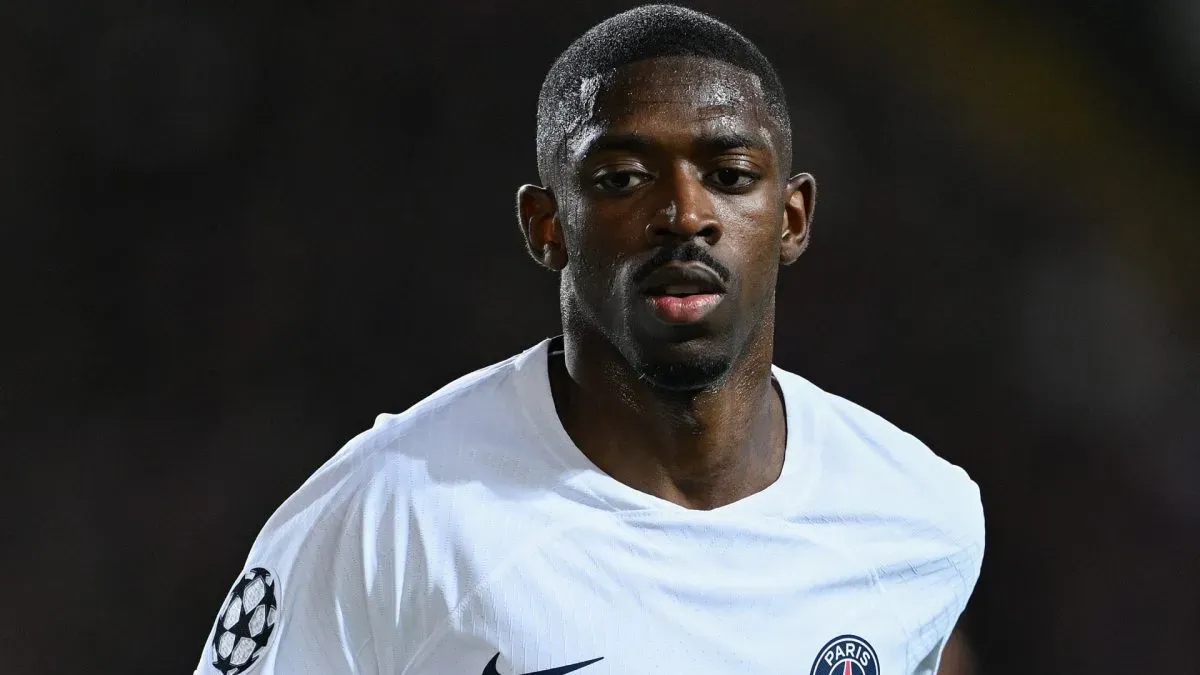
Ousmane Dembele of Paris Saint Germain looks on during the UEFA Champions League quarter-final second leg match between FC Barcelona and Paris Saint-Germain in 2024. (Source: David Ramos/Getty Images)
When Barcelona lost Neymar in 2017, they turned to Ousmane Dembele as the bright young solution—and they paid handsomely for it. The initial payment to Borussia Dortmund was €105 million, but once all performance-linked bonuses were included, the total swelled to an eye-watering €148 million.
His time in Catalonia was as tumultuous as the fee: injury-prone and inconsistent, he still managed to appear in 185 matches, scoring 40 goals and assisting 43, collecting seven trophies in the process.
| Rank | Player | Club | Season | Fee |
| 1 | Ousmane Dembele | Barcelona | 17/18 | €148.00m |
| 2 | Philippe Coutinho | Barcelona | 17/18 | €135.00m |
| 3 | Joao Felix | Atletico Madrid | 19/20 | €127.20m |
| 4 | Jude Bellingham | Real Madrid | 23/24 | €127.00m |
| 5 | Eden Hazard | Real Madrid | 19/20 | €120.80m |
| 6 | Antoine Griezmann | Barcelona | 19/20 | €120.00m |
| 7 | Gareth Bale | Real Madrid | 13/14 | €101.00m |
| 8 | Cristiano Ronaldo | Real Madrid | 09/10 | €94.00m |
| 9 | Neymar | Barcelona | 13/14 | €88.00m |
| 10 | Frenkie de Jong | Barcelona | 19/20 | €86.00m |
| 11 | Luis Suarez | Barcelona | 14/15 | €81.72m |
| 12 | Aurelien Tchouameni | Real Madrid | 22/23 | €80.00m |
| 13 | Zinedine Zidane | Real Madrid | 01/02 | €77.50m |
| 14 | Julian Alvarez | Atletico Madrid | 24/25 | €75.00m |
| 15 | James Rodriguez | Real Madrid | 14/15 | €75.00m |
| 16 | Thomas Lemar | Atletico Madrid | 18/19 | €72.00m |
| 17 | Zlatan Ibrahimovic | Barcelona | 09/10 | €69.50m |
| 18 | Kaka | Real Madrid | 09/10 | €67.00m |
| 19 | Luka Jovic | Real Madrid | 19/20 | €63.00m |
| 20 | Dean Huijsen | Real Madrid | 25/26 | €62.50m |
| 21 | Luis Figo | Real Madrid | 00/01 | €60.00m |
| 22 | Diego Costa | Atletico Madrid | 17/18 | €60.00m |
| 23 | Miralem Pjanic | Barcelona | 20/21 | €60.00m |
| 24 | Raphinha | Barcelona | 22/23 | €58.00m |
| 25 | Dani Olmo | Barcelona | 24/25 | €55.00m |
- Dani Olmo – FC Barcelona
- Raphinha – FC Barcelona
- Miralem Pjanic – FC Barcelona
- Diego Costa – Atletico Madrid
- Luis Figo – Real Madrid
- Dean Huijsen – Real Madrid
- Luka Jovic – Real Madrid
- Kaka – Real Madrid
- Zlatan Ibrahimovic – FC Barcelona
- Thomas Lemar – Atlético Madrid
- James Rodriguez – Real Madrid
- Julian Alvarez – Real Madrid
- Zinedine Zidane – Real Madrid
- Aurelien Tchouameni – Real Madrid
- Luis Suarez – FC Barcelona
- Frenkie de Jong – FC Barcelona
- Neymar – FC Barcelona
- Cristiano Ronaldo – Real Madrid
- Gareth Bale – Real Madrid
- Antoine Griezmann – FC Barcelona
- Eden Hazard – Real Madrid
- Jude Bellingham – Real Madrid
- Joao Felix – Atletico Madrid
- Philippe Coutinho – FC Barcelona
- Ousmane Dembele – FC Barcelona

